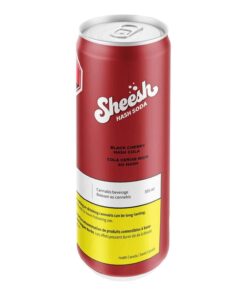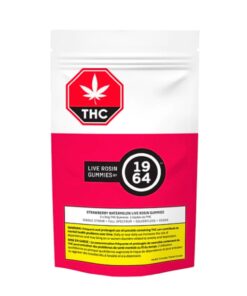While there are many ways to smoke cannabis, many consumers have opted into smokeless options including edibles. Recently however, more variations of THC edibles have made their way to the market. Terms like “Live Resin’, “Live Rosin”, and “Full Spectrum” can be a little confusing to understand and while we’d be happy to explain it all to you in-store, it can be a bit much to digest all in one sitting. Luckily, we are here to help you understand the meanings of all of these terms, how they differ from your standard distillate edible, and how they may affect you.
Understanding The Basics –
Let’s start with learning the basic terms of cannabis edibles.
Distillate edibles:
Distillate edibles are your most common edible on the market. They are made by isolating and purifying a single cannabinoid, usually THC or CBD. This process removes all other cannabinoids and results in a highly refined and concentrated product. Distillate cannabis edibles do not have distinct sativa vs. indica effects because the distillation process removes the unique compounds that are responsible for these specific effects, you’re strictly just getting “high”.
These edibles are known for their consistent potency, and they often have little to no cannabis taste, making them a great choice for consumers who don’t enjoy the true cannabis flavor.
Shop Distillate Edibles
Terpene Enhanced Edibles
Your Introduction to Terpenes | Bud Bar Dispensary
Some edibles, like Wyld gummies, are distillate-based but have botanical terpenes added. These terpenes are extracted from plants like pine or citrus and are blended with cannabis products to impart unique flavors and effects. Botanical terpene-enhanced gummies are more likely to match consumer expectations of Sativa, Hybrid, or Indica strain effects compared to standard distillate edibles.
Shop Terpene Enhanced Edibles
Full Spectrum Edibles
Full spectrum cannabis edibles are made using a cannabis extract that includes a wide range of compounds found naturally in the cannabis plant. This includes not only the main active ingredients like THC, and CBD, but also other cannabinoids, terpenes, and natural plant compounds. These additional compounds can provide a more well-rounded and potentially enhanced experience compared to distillate edibles.
- Full spectrum edibles are often associated with the “entourage effect,” which suggests that the combination of various cannabis compounds working together may have a more significant impact than each compound alone.
Live Resin Edibles
Live resin cannabis edibles are made when fresh frozen cannabis plants are put through a solvent extraction process which utilizes butane, propane, CO2, or another solvent. This process involves freezing the cannabis plant shortly after harvest and then extracting the cannabinoids and terpenes while it’s still frozen.
Live Resin Edibles
- Live resin edibles are known for their intense and fresh flavors, as well as potentially stronger and more distinct effects due to the preservation of terpenes.
- They typically have a robust and aromatic profile that is closer to the original cannabis plant, giving them a unique taste and experience.
Live rosin cannabis edibles are similar to live resin edibles in that they also aim to preserve the natural flavors and effects of the cannabis plant.
However, live rosin is made using a different extraction method, where heat and pressure are applied to the cannabis plant to release the cannabinoids and terpenes without the use of solvents or chemicals. Live Rosin doesn’t use chemical solvents, so it’s considered a more natural, clean product
- Live rosin edibles may have a slightly different flavor profile compared to live resin, but they still offer a rich and flavorful experience.
Shop Live Rosin & Live Resin Edibles
Frequently Asked Questions
Live resin emphasizes the preservation of terpenes and cannabinoids through freezing and solvent-based extraction, while live rosin achieves similar goals using heat and pressure in a solventless process. The choice between the two largely depends on individual preferences for flavor, production methods, and desired effects.

































